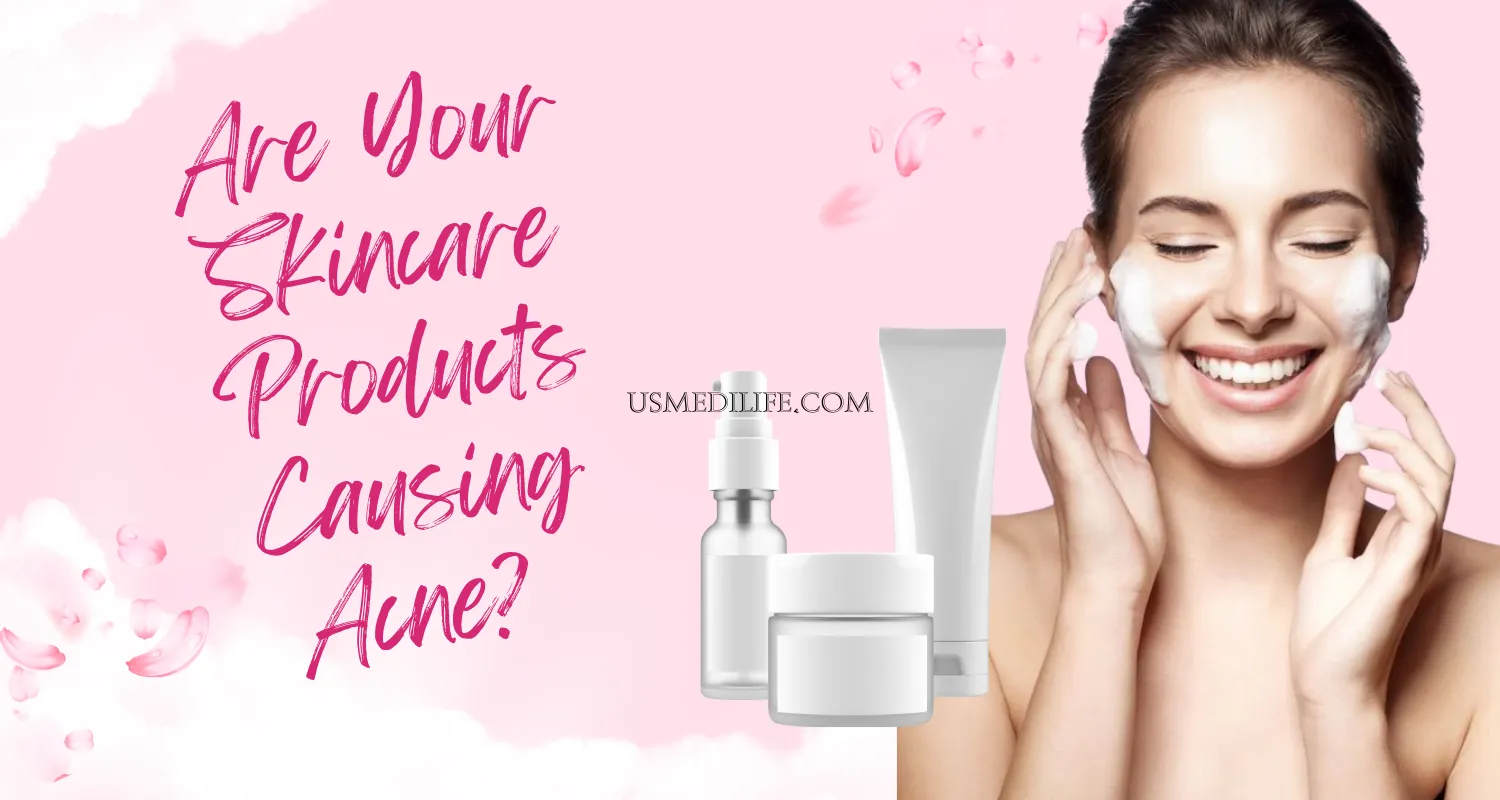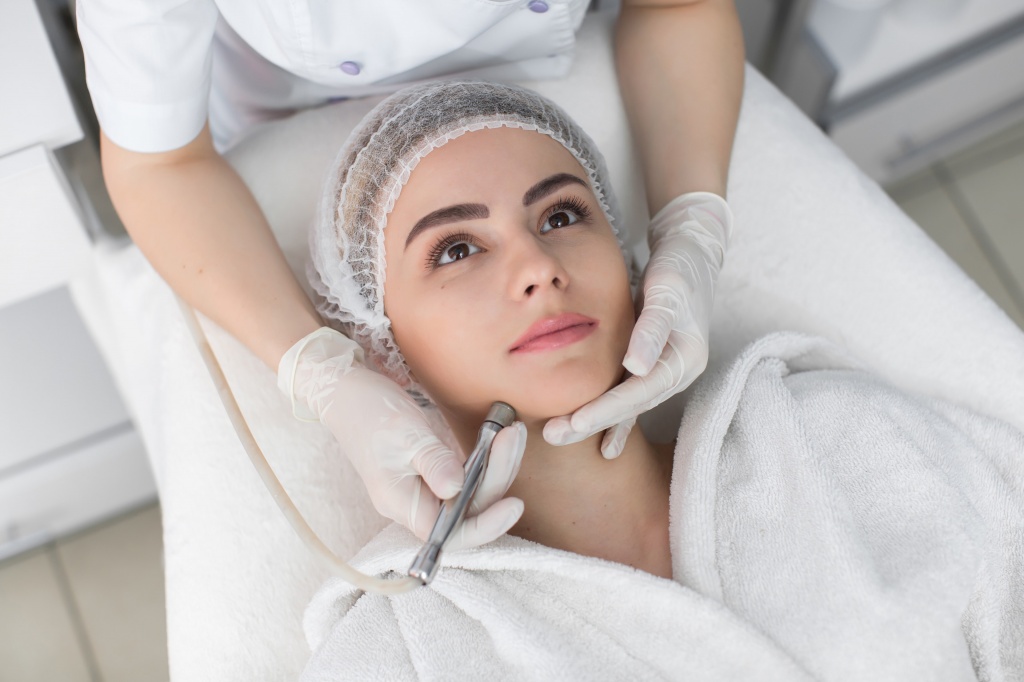
Dr. Ashwini
11-04-2025
Are Your Skincare Products Causing Acne? Spotting Hidden Triggers
You’re diligently washing your face, applying serums, and slathering on moisturizers, yet those stubborn breakouts just won’t quit. Could your skincare routine the very thing meant to help be the culprit behind your acne? It’s more common than you think. Some products, even those labeled “non-comedogenic” or “acne-safe,” can secretly trigger clogged pores and pimples. In this blog, we’ll uncover how your skincare products might be causing acne, help you spot hidden triggers, and share tips to build a routine that truly supports clear, healthy skin.
What Is Acne, and How Can Products Cause It?
Acne occurs when pores become clogged with oil (sebum), dead skin cells, and bacteria, leading to blackheads, whiteheads, or inflamed pimples. While hormones, diet, and stress often play a role, the wrong skincare products can exacerbate or even cause breakouts by:
- Clogging Pores: Ingredients that are too heavy or occlusive can trap oil and debris.
- Irritating Skin: Harsh formulas can disrupt your skin barrier, triggering excess oil production.
- Causing Allergic Reactions: Certain additives may lead to redness or inflammation that mimics acne.
- Unbalancing Your Skin: Overuse of drying or exfoliating products can prompt your skin to overcompensate with oil.
This type of acne, often called acne cosmetica, develops from product use and can appear as small, persistent bumps, especially on the forehead, cheeks, or chin. Let’s explore the top culprits and how to spot them.
Common Skincare Product Triggers for Acne
Not all products are created equal, and some ingredients or formulations are more likely to cause breakouts. Here’s what to watch for:
1. Comedogenic Ingredients
- What They Are: Ingredients rated high on the comedogenicity scale (0-5) are more likely to clog pores. Common offenders include coconut oil, cocoa butter, isopropyl myristate, and some silicones (like dimethicone in high concentrations).
- Where to Find Them: Heavy moisturizers, thick sunscreens, or creamy cleansers often contain these.
- Signs of Trouble: Small, non-inflamed bumps (comedones) or sudden blackheads after starting a new product.
- How to Spot: Check ingredient lists and avoid products with known comedogenic oils, especially if you have oily or acne-prone skin.
2. Overly Heavy Moisturizers
- What They Are: Rich creams designed for dry skin can overwhelm oily or combination skin types, creating a breeding ground for acne.
- Where to Find Them: Night creams, anti-aging balms, or products marketed as “ultra-hydrating.”
- Signs of Trouble: Greasy residue on your skin hours after application, followed by clogged pores.
- How to Spot: Test a moisturizer on a small patch of skin (like behind your ear) for a few days before full use. Opt for lightweight, gel-based formulas with hyaluronic acid or glycerin.
3. Harsh Cleansers or Over-Exfoliation
- What They Are: Foaming cleansers with sulfates (like sodium lauryl sulfate) or aggressive exfoliants (like high-percentage AHAs/BHAs) can strip your skin, triggering excess oil production to compensate.
- Where to Find Them: Drugstore acne cleansers or scrubs with rough beads.
- Signs of Trouble: Tight, dry skin after washing, followed by shinier-than-usual oiliness or new breakouts.
- How to Spot: If your skin feels squeaky clean or irritated post-cleansing, switch to a gentle, sulfate-free cleanser. Limit exfoliation to 1-2 times weekly with mild acids like lactic acid.
4. Fragrances and Essential Oils
- What They Are: Synthetic fragrances or natural essential oils (like lavender or tea tree in high doses) can irritate sensitive skin, leading to redness or acne-like bumps.
- Where to Find Them: Toners, masks, or “aromatherapy” skincare lines.
- Signs of Trouble: Red, itchy patches or small pustules shortly after using a scented product.
- How to Spot: Look for “fragrance-free” or “essential oil-free” labels. Patch-test new products on your inner arm to catch reactions early.
5. Certain Sunscreens
- What They Are: Chemical sunscreens with avobenzone or oxybenzone, or thick physical sunscreens with zinc oxide, can sometimes clog pores, especially in humid conditions.
- Where to Find Them: Daily facial sunscreens or sport formulas.
- Signs of Trouble: Breakouts along sunscreen-heavy areas like your cheeks or T-zone after sun exposure.
- How to Spot: Choose non-comedogenic, lightweight sunscreens labeled for acne-prone skin. Gel or fluid textures are less likely to clog pores.

6. Makeup and Primers
- What They Are: Foundations, concealers, or silicone-heavy primers can trap oil and sweat, leading to acne mechanica (from friction or occlusion).
- Where to Find Them: Long-wear or full-coverage makeup.
- Signs of Trouble: Pimples where you apply makeup, especially after wearing it all day.
- How to Spot: Check for “non-comedogenic” or “oil-free” labels. Remove makeup thoroughly with a double cleanse (oil-based, then water-based cleanser) nightly.
How to Identify If Your Products Are the Problem
Suspecting your skincare is causing acne? Follow these steps to pinpoint the trigger:
- Introduce Products One at a Time: Start new products individually, using them for at least a week to monitor your skin’s reaction. Adding multiple products at once makes it hard to identify the culprit.
- Keep a Skin Journal: Track what you use, when you apply it, and any changes (new pimples, redness, etc.). Note the location of breakouts forehead acne might point to heavy moisturizers, while chin breakouts could suggest hormonal or makeup issues.
- Simplify Your Routine: Strip your routine to basics gentle cleanser, light moisturizer, and sunscreen for 2-3 weeks. If acne improves, reintroduce products one by one to test.
- Patch Test: Apply a small amount of a new product to your jawline or behind your ear for a few days. If no reaction occurs, it’s likely safe for broader use.
- Check Ingredients: Use online tools like CosDNA or Skincarisma to analyze product ingredient lists for comedogenic or irritating components.
Building an Acne-Safe Skincare Routine
Once you’ve spotted potential triggers, it’s time to create a routine that supports clear skin. Here’s a simple, effective plan:
- Cleanser: Choose a gentle, non-foaming cleanser with ingredients like chamomile or centella asiatica to soothe without stripping. Cleanse twice daily to remove oil and impurities.
- Treatment: Use targeted acne treatments with proven ingredients like salicylic acid (1-2%) to unclog pores or benzoyl peroxide (2.5-5%) to kill acne-causing bacteria. Start with alternate days to avoid irritation.
- Moisturizer: Opt for a lightweight, oil-free moisturizer with niacinamide or ceramides to hydrate and strengthen your skin barrier without clogging pores.
- Sunscreen: Apply a broad-spectrum SPF 30+ daily, choosing gel or mattifying formulas for oily skin. Reapply every two hours if outdoors.
- Optional Extras: Incorporate a weekly clay mask (with kaolin or bentonite) to absorb oil or a low-dose retinoid (like adapalene) at night to prevent clogged pores—introduce slowly.

Other Factors to Consider
Skincare products aren’t always the sole cause of acne. Double-check these external factors:
- Dirty Tools or Pillowcases: Bacteria on makeup brushes, sponges, or pillowcases can transfer to your skin. Wash brushes weekly and change pillowcases twice a week.
- Hair Products: Heavy conditioners or styling gels can drip onto your forehead or neck, clogging pores. Rinse skin after applying haircare.
- Touching Your Face: Oils and dirt from your hands can trigger breakouts. Try to minimize face-touching and sanitize your phone regularly.
- Diet or Stress: Dairy, high-sugar foods, or chronic stress can worsen acne. Keep a food diary to spot patterns and practice stress-relief techniques like meditation.
When to Seek Professional Help
If you’ve eliminated suspect products and still struggle with acne, it might be time to consult a dermatologist. They can:
- Prescribe stronger treatments like topical/oral antibiotics, retinoids, or isotretinoin for persistent acne.
- Test for underlying issues like hormonal imbalances (e.g., PCOS) or allergies.
- Offer procedures like chemical peels or laser therapy to address scarring.
Bring your skincare product list to your appointment to help your dermatologist identify potential triggers.
Final Thoughts
Your skincare routine should be your ally, not your enemy, in the fight for clear skin. By learning to spot hidden acne triggers like comedogenic ingredients, harsh cleansers, or heavy makeup you can take control of your complexion. Simplify your routine, read labels carefully, and listen to your skin’s signals. With patience and the right products, you’ll be on your way to a healthier, breakout-free glow.
Have you ever found a skincare product that caused unexpected acne? Share your story below, and let’s swap tips for clearer skin!



